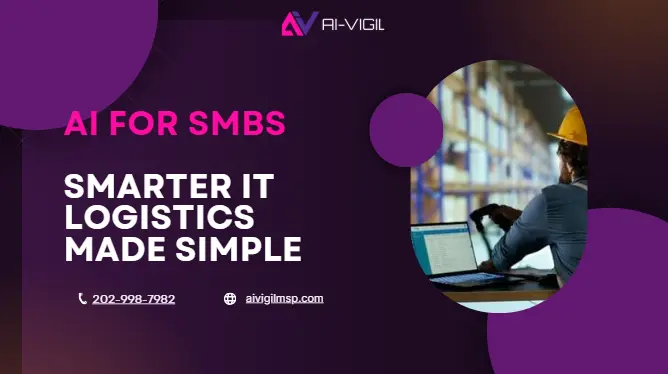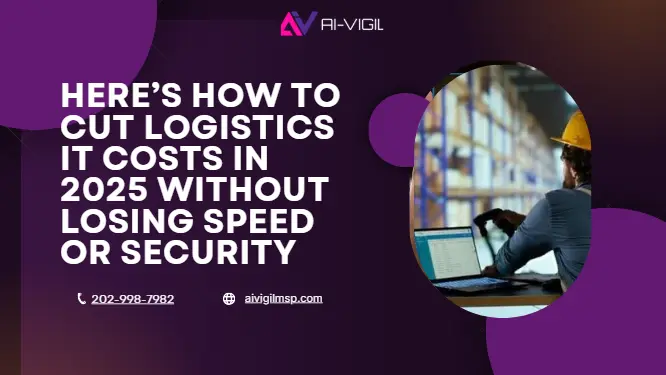Does this sound familiar?
You are busy operating your business yet the IT costs keep nagging you like a hidden cost of taxation. Today it is obsolete. The second, is the cybersecurity concern or an unexpected extension of the license. Your technology budget soon becomes money coming out of his pocket in all directions.
At this point, this may strike a chord which is not unique to you. The same frustration is experienced by a large number of small and medium-sized businesses (SMBs). But the good news is that there exist cost-effective means of reducing IT expenses without sustaining the cost of either performance or security.
In this post we will review 5 IT cost-cutting measures that are well tested and may make your work easier and help you save money to be spent on long-term development.
1. Say Goodbye to IT Overwhelm: Switch to Managed IT Solutions
Consider a scenario. Your systems are functioning without giving you any troubles, updates are made automatically and possible mistakes are corrected before they can affect your operation. None of this requires the cost of an in-house team.
That is the advantage of Managed IT Services. Managed Service Provider is a proactive model where security, proactive monitoring, IT support, and system update are provided at a fixed monthly subscription. No nasty surprises. No fire-fighting. Just smooth-sailing services of knowledgeable professionals who know your business.
Downtime would cost a small business up to $137-427 dollars per minute. Managed services eliminate virtually no-down time monitoring around the clock.
Benefits:
- Reduced amounts of labor and overhead expenses
- Increased availability of the system
- Availability of high-level care
- Growing solutions to match your business.
Pro Tip: Select an MSP that has experience working with SMBs so that their solutions fit your needs and are not those designed to serve a global enterprise.
2. Ditch the Hardware: Embrace Cloud Computing
Probably the best part about cloud computing is that it allows the removal of costly on-premise infrastructure and reduces the initial and support costs. Using things such as Google Workspace, Microsoft 365 or Amazon Web Services you only pay what you need and can scale high or low depending on what your business requires.
More than affordability, the cloud has never seen a more possibility on flexibility, and collaboration features that suit remote or hybrid teams.
As stipulated by IBM Cloud Education, cloud computing has the potential of cutting down IT expenditures by up to 40 percent and enhancing ease of access to data and uptime.
Cloud Advantages:
- Lower costs of hardware and energy use.
- Integrated data protection/ disaster recovery
- Increased co-operation between teams in different bases
- On-the-spot up-to-date and remote access of files
And, yes, security is baked in. Despite what some people claim, respectable cloud providers can provide enterprise-level encryption, compliance tools and multi-layered protection that competes with most on-prem setups.
Curious about cloud benefits? Check out this article for cloud computing for small businesses.
3. Stop Paying for Stuff You Don’t Need: Optimize Your IT Systems
Just admit it, there are probably quite a few tools you pay a lot of money on and barely use.
Duplicate software, unused licenses, and out-dated systems etc. bloated IT stacks are money traps. IT optimization is actually the smoothing of your infrastructure in order to enhance performance and reduce wastage.
This can be initiated by auditing what you have:
- Do you have to pay money on duplicated features tools?
- Are you still using that outdated backup software?
- What do you do manually that can be computerized?
An example is a strategic IT consulting session (usually included with vCIO services) to assist with assessing and re-organizing your technology environment.
The organizations are wasting up to 30% of their software budgets because they had no insight about what they were not using and they were buying redundant software.
How To Start:
- Use license management tools to identify the unused software
- Standardize payroll, CRM or communication systems
- Automate routines: more abstract: use software such as Zapier or Microsoft Power Automate
4. Don’t Go Generic: Get Small Business IT Support That Fits You
Generic IT services can be acceptable to a big company but SMBs require custom services. Every technology decision you make when you are running lean has a direct financial implication to your bottom line, and there is no more one step, fits all solutions.
Choosing to hire the services of small business IT support specialists will mean you receive services based on your own specific setup, size, and objectives. This includes:
- Not underwhelming or overkill cybersecurity
- Compliance advice (this is particularly of importance in the area of healthcare, finance and retail)
- Optimal system set-ups which suit your work processes
Insight: Custom guidance will make you escape non-compliance fines, delays caused by incompatible tools, and even data leaks, which require extensive remedial expenses afterwards.
Bonus: Faster resolution and improved communication Also, since you have a dedicated IT support person, receiving support is faster and easier to do, no waiting in an enterprise level help desk queue with 5,000 others.
5. Save Big with Open-Source Software
Yep, there are still really good tools that will not cost you a dime.
Open-source software Open-source software is also a little-recognized cost-savings resource among SMBs. Alternatives such as LibreOffice (as opposed to Microsoft Office), GIMP (as opposed to Photoshop) or Linux (as opposed to Windows Server) have similar capabilities but have no fees attached to them.
And because it is free, does not mean it is inferior. Communities within open-source systems can be very busy and thus keep improving the security and characteristics.
Open-Source Technology Favourites with SMBs:
- LibreOffice- Office suit
- GIMP -Image editing
- Thunderbird- mail client
- Odoo -Business management software
Combine open-source software with professional IT assistance (or a virtual CIO) to make sure it is deployed without difficulties and provides minimal interference.
Bonus: Future-Proofing = Long-Term Savings
Bringing down costs does not imply only a reduction in cost today but a creation of a basis in information technology that can grow as the business would.
There are services such as:
- IT Consulting- Outsourced
- strategy planning of vCIO
- Cybersecurity audits
- Disaster recovery planning
These services avoid expensive shocks, whether in ransomware intrusions to regulatory infractions and place your SMB on sustainable, secure paths of expansion.
Final Thoughts: Tech-Savvy = Budget-Smart
The lesson here? Real savings come out of smart IT decisions.
It does not matter whether you are migrating to managed IT services, move into the cloud, or replace your costly tools with free-source options–whatever decision you make will be one sitting you closer to your leaner and efficient, more secure business.
The question to ask is:
- Does your existing IT infrastructure support or destroy your budget?
- What is a short term win you could take on this month?
It does not require a huge budget in order to streamline your IT. Everything is only about having a proper strategy, and proper support.
Explore More IT Strategies Designed SMB
Want to learn more about SMB technology strategies, cloud migration or cost optimization? As you consider how to find a MetaSoft company, we encourage you to visit our Retail Industry IT Solutions page to see how we help growth oriented businesses with technology that actually works.
FAQs:
Q: What is managed IT support?
A: Managed IT services are a way of offering pro-active support whose cost is a fixed fee to keep the IT infrastructure checked up and maintained over time so that they have little to no downtime and surprise expenses.
Q: Is cloud computing secure to SMBs?
A: Yes. Reliable providers such as Google Cloud and AWS provide enterprise level security such as encryption of data, compliance and backup platforms.
Q: How do I audit my software tools?
A: Run license tracking software or ask your IT provider to figure out unused or overlapping software and finetune your pile.
Q: Can open-source tools work for professional businesses?
A: Absolutely. Open-source platforms allow many SMBs to reduce costs by the reduction in quality sacrifices. The advice of an IT professional makes implementation smooth.






